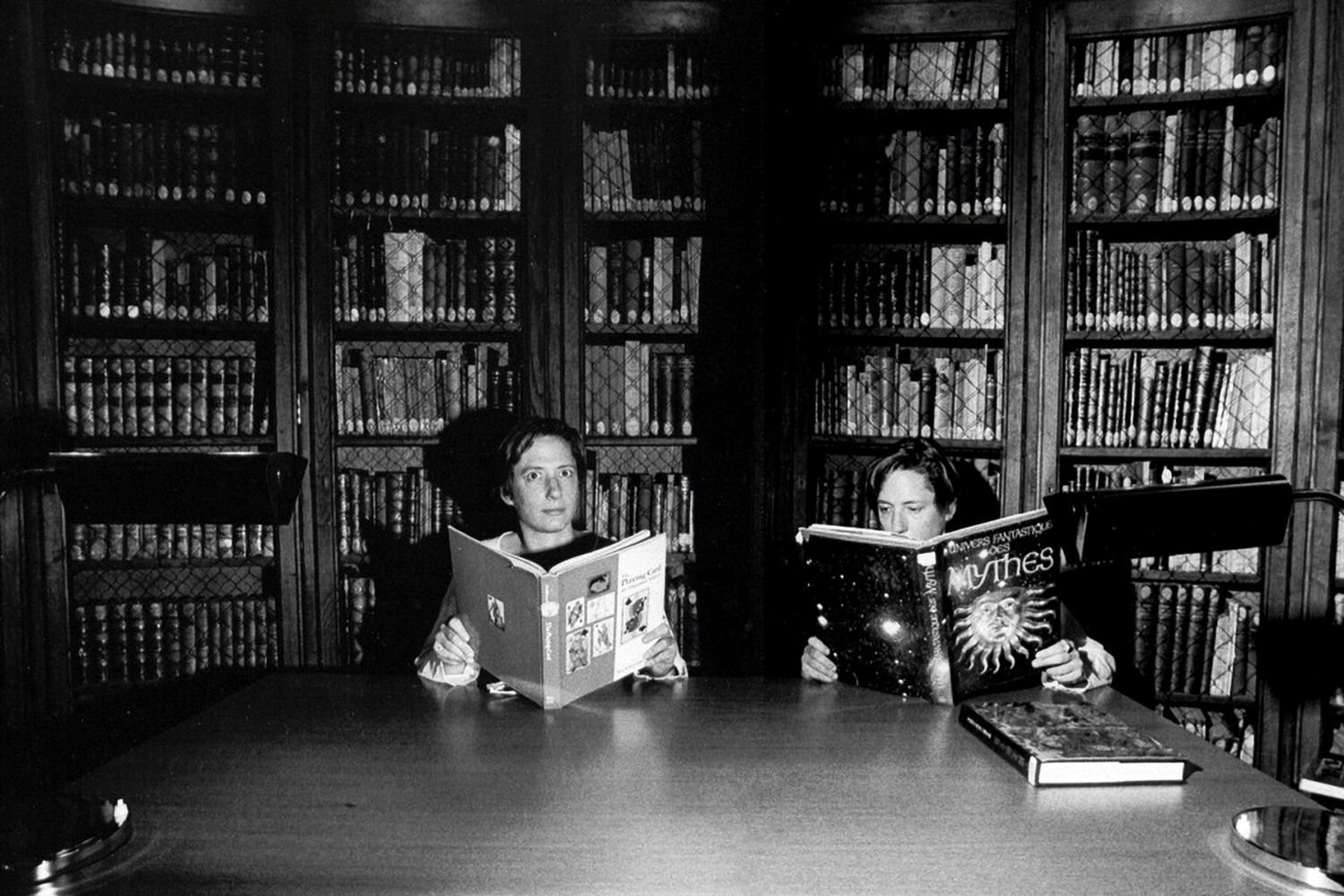
Recent Writings
A Feminist Manifesta of the Blockchain
Claudia Hart, Why We Need A Feminist Manifesta of the Blockchain, Hyperallergic, April 20, 2021
________________
The Tree of Life
Claudia Hart, The Tree of Life, bitforms gallery, NY, online exhibition as netart work by Claudia Hart and Shi Zhen with essay and curating by Claudia Hart, including imagery and video by Mark Dorf, Claudia Hart, Auriea Harvey and Michael Stimm, Kurt Hentschlager, Gary Hill, Sara Ludy, Davide Quayola, Shi Zhen and Marina Zurkow
__________________
The Romantic App
Claudia Hart, Augmented Reality In Education, Vladimir Geroimenko, Editor, Chapter 16, 2020, Springer Series on Cultural Computing, Springer Publishing Company, NY.
__________________
The Healing App
Claudia Hart + Olivia Davis, Augmented Reality Games II, Geroimenko, Editor, Chapter 9, 2019, Springer Series on Cultural Computing, Springer Publishing Company, NY. (chapter on my commission, at Montifiore Hospital in the Bronx, a playroom for children in extended hospital care co-written by the hospital curator)
__________________
Really Fake or Faking Reality? - The Riot Grrrls Project
Claudia Hart and Rose Marie May, Chapter 21 in Augmented Reality Art: From an Emerging Technology to a Novel Creative Medium, Vladimir Geroimenko, Editor, 2018, Second Edition, Pp 369-383, Springer Series on Cultural Computing, Springer Publishing Company, NY, NY,
__________________
Early Writings
In the early eighties, I began my practice as a critic rather than as a visual artist. I was trained at the Columbia University School of Architecture, in a program that favored propositional buildings during the era of paper architecture. I finished my studies to immediately begin publishing writings about what was then termed the “cross-over” between architecture and art. My first jobs, post-graduate-school, were editorial, first at a magazine that was eventually renamed ID: the Magazine of International Design, and then at Artforum. During my last days at ID, I began to produce artworks inspired by the utopian architecture of the 18th century.
My first years as an artist still included my writing practice, one that included reviews for various art magazines, as well as curating exhibitions for a variety of not-for-profit institutions and writing artist’s catalogs. A few years later, in the mid-nineties, I began to produce the illustrated books that resulted in my publishing A Child’s Machiavelli and Dr. Faustie’s Guide to Real Estate Development for the “trade.” All of those illustrated books were critical of power politics in general, but were also funny and ironic – precursors to the “graphic novel,” a form that had not yet emerged as practice at the time. My critical writing practice at that time ceased.
In 2004, Claudia Herbst, a colleague from Pratt Institute, invited me to write a paper with her for the 2005 College Art Association conference. What resulted was a revivification of my critical writing practice. Included in the collection below is a distinct body of texts, quite academic and written in what I now think of as a graduate-student style. Ultimately, I expanded my writing style into something that remains to this day, autobiographical, essayist, and clearly related to my art practice and typically also about it. As I truly lived and taught my art, I was able to integrate it into writings that remain more essays about life through art, than anything more theoretical or scholarly.
December 2, 2020
The Aesthetics of the Fake: an exhibition, conference and on-line catalog organized by Rachel Clarke, Claudia Hart and Michael Rees
Sacramento's University Library Gallery
California State University, March 31-June 4, 2011
The Power Center
William Paterson University, Winter 2012
_______________
The Digital Any-Space-Whatever: Screening Program for College Art Association, 99th Annual Conference,
February 9-12, 2011, New York, NY
_______________
The Simulationists: An exhibition, a panel and an evening of performance curated by Claudia Hart, Mark Jeffery and Judd Morrissey
The Simulationists: An exhibition with cris cheek, Ursula Endlicher, Kurt Hentschlager, Second Front, Alan Sondheim and Student Artists
February 1 - March 23, 2011; Rymer Gallery, School of the Art Institute of Chicago
The Simulationists: An Evening of Mixed Reality Performance with cris cheek, Ursula Endlicher and Kurt Hentschlager
February 18, 2011; Performance Space, 280 S. Columbus Drive, Room 012, School of the Art Institute of Chicago
Mixed-Reality Performance Symposium: with Ghislaine Boddlington, Christopher Salter and performing artists
February 18, 2011; Performance Space, 280 S. Columbus Drive, Room 012, School of the Art Institute of Chicago
_______________
Babydoll Paper for: The Question of the Girl, Part II
panel chaired by Jillian St. Jacques
National Womens' Studies Conference, Denver 2010
_______________
Theory: Under Fire: 3D Animation Pedagogy and Industry Complicity in New Media Education
Panel for 2010 Chicago College Art Association Conference
Co-Chairs:
Claudia Hart, School of the Art Institute, Chicago, IL
Rachel Clarke, California State University, Sacramento, CA
_______________
Theory: Goodbye Privacy - Ars Electronica
Kurt Hentschlaeger: KARMA / cell
Essay by Claudia Hart
Goodbye Privacy: Ars Electronica 2007
_______________
Theory: Can Geeks be Humanists?
Presentation for Can Geeks be Humanists?
Chair: Marcia Tannor, panel for 95th Annual College Art Association Panel,
New York, February 22–25, 2007
Paper, "On Can Geeks be Humanists,"
for Art in the Age of Technological Seduction,
New Media Caucus Journal, January 2007
_______________
Theory: Can We Fall in Love With a Machine?
Session Chair of
Can We Fall in Love With a Machine?
Panel for Artspace Section of 94th Annual Conference in Boston,
February 22–25, 2006
Speakers:
Michael Century, Dr. Beth Coleman, Lynn Hershman Leeson, Ellen Levy, Dr. Judith Rodenbeck, Dr. James H. Rubin, Dr. Sherry Turkle, Dr. Mari Velonaki
CAA 94th Annual Conference Boston
_______________
Theory: Can We Fall in Love With a Machine?
Curator and Book Editor of
Can We Fall in Love With a Machine?
Exhibited at and book published by:
The Wood Street Galleries
601 Wood Street
Pittsburgh, PA 15222
Jan 27- April 1, 2006
Exhibition participants:
Jean Dubois, Jose Carlos Casado, Young-Hae Chang Heavy Industries, Claudia Hart and Michael Ferraro, Lynn Hershman Leeson, Lynn Hughes and Simon Laroche, Catherine Ikam / Louis Fléri, Thecla Schiphorst, Mary Ellen Strom
Book contributors:
Essays by Claudia Hart and Andrea Ackerman, with papers by Michael Century, Dr. Beth Coleman, Lynn Hershman Leeson, Ellen Levy, Dr. Judith Rodenbeck, Dr. James H. Rubin, Dr. Sherry Turkle, Dr. Mari Velonaki
_______________
Theory: Virtual Sex: The Female Body in Digital Art
Paper in Collaboration with Associate Professor Claudia Herbst, Pratt Institute
Virtual Sex: The Female Body in Digital Art
For “From Feminism to Formalism,” panel for 93th Annual College Art Association Conference in Atlanta,
February 18-22, 2005
_______________________________________
Experimental 3D
I exhibited in the contemporary art context for fifteen years before I turned to 3D animation. Between 1998 - 2000, I took classes at New York University's Center for Advanced Digital Applications to learn Maya 3D animation software.
In 2000, I began teaching Maya classes. At that time I was not familiar with media-production oriented vocational training, the context where 3D animation teaching first developed. To my surprise, I found that standardized 3D curriculum, oriented towards students intended for commercial production, was deadening to their ability to think actively and inductively.
The 3D problem is the result of pedagogical structures borrowed from a specific style of industry pipeline created to produce corporate effects films. These are films that are assembly-line in their manufacturing style. Skills are taught with an eye towards narrow specialization. As a result, students are literally taught to resist big picture thinking, which means to resist thinking conceptually, holistically and along with that, creatively.
When I arrived at the School of the Art Institute of Chicago in the fall of 2007, I was encouraged by Tiffany Holmes, then chair of my former department - Art and Technology Studies - to write curriculum for a new kind of 3D animation studio class. Each one utilized virtual imaging and 3D animation, techniques capable of simulating sculpture, painting, architecture, photography and film or video, depending on the approach taken. My concept was that 3D animation and imaging software could be deployed along divergent paths, each building upon different art histories and therefore different contextual and theoretical trajectories.
My classes bundle conceptually and formally related skills. Digital Bodies uses experimental dance films as the artistic inspiration for teaching character animation. Virtual Installation is a course in which computer models could be "installed" in non-sites, meaning imaginatively integrated into photographs and video. Atmospheric Animation is a class in which fluid environments evoke atmospheres, to create a stage for enacting physics simulations. Painting in the Virtual Environment is a course that emphasizes the possibilities of the pictorial and of surface structure in 3D forms. Introduction to Experimental 3D is the core class, modeled after Johannes Itten’s Bauhaus Basic Course.
The potential of 3D animation within contemporary art practice is not yet fully realized. I believe this is because of the industry-oriented style of training. Typically, students are offered classes with titles like: Modeling, Rigging, Character Animation, Rendering, Texturing, etc. These are classes named for specific technologies rather than their creative potentials. Educational one-line tutorials and the exploding DVD tutorial business offer a plethora of exercises as homework assignments: "Make a cartoon walk cycle," model a grisly humanoid monster, or create a highly lacquered sports car. This is an infrastructure that reflects an assembly-line consciousness that is microcosmic and lends itself to cog-like thinking.These educational tools also result in the production of an unacknowledged "company style." They teach not just skills but the aesthetics conveying the values and ethos of a certain corner of the media industry: the culture of shooter games, splatter films and Disney cartoons.
The Experimental 3D curricular track at SAIC is the first of its kind. It has opened the medium up to a different kind of student. These are not just students with aspirations to practice contemporary art, of which there are many, but also those who want to be independent film directors and high-end art directors. The proof of the pudding, however, is in the eating. When I first arrived in Chicago, my class registration was low. After three years, my classes are fully booked shortly after they open for registration.
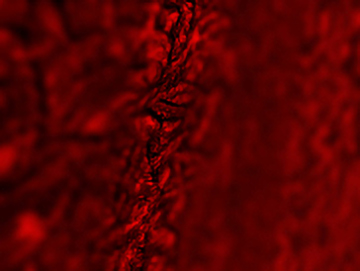
Intro to Experimental 3D
This class recreates Johannes Itten's basic course developed at the Weimar Bauhaus School, but here using Maya 3D software. Students solve a series of formal problems, at increasing levels of complexity. Moving from 2-dimensions to 3-dimensions to 4-dimensions (time), students evolve their abilities to utilize aspects of light and dark, form, rhythm, color, proportion and volume at the same time as being introduced to this complex software interface.
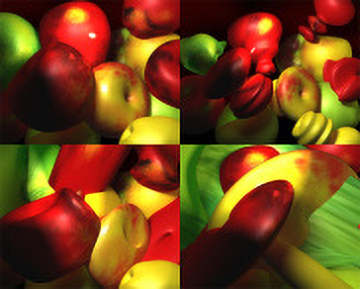
Painting in the Virtual Environment
Using Maya 3D animation software, students create virtual still life paintings. Each contributes organic, industrial and digital objects and works in a team to compose allegorical still lives first recorded as a photograph to serve as the basis of a 3D computer model. Digital sculpting, painting, and photo-realistic lighting simulation are taught. Significant class time is spent on historical precedents from Cezanne to contemporary set-up photographers like Thomas Demand and Sam Taylor Wood.

Atmospheric Animation
This class teaches particle effects using Maya. Students create an underwater environment as a case study, both to learn Maya dynamics in particular, and generally, how to approach making an elaborate special effects scene. The class evolved from my piece, Ophelia. In creating it, I developed techniques and composed a 50- page "recipe," serving as the class text book. The atmospheric animations of British artist Saskia Wolbers are also analysed.
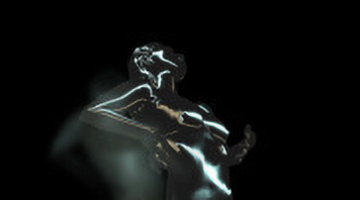
Digital Bodies
In this class, students choreograph virtual performances using Maya 3D animation software. Adopting default bodies, students learn the Full-Body IK System, the most advanced animation technique available to animate their characters. Class orientation is towards virtual performance in terms of the visual possibilities of cinematic language and the potential of digital bodies to move in both natural and unnatural ways. Formal inspiration comes from avant-garde dance films, from Maya Deren to Yvonne Rainer and Charles Atlas.
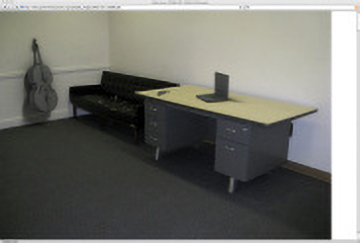
Virtual Installation
Using 3D animation software, students create simulated site-specific installations using found digital objects. The techniques of cinematic special effects are taught to create virtual assemblages for real sites. The course strategy will be to combine and manipulate 3D models found on the Internet, to be integrated into photographed sites using match lighting and global illumination lighting simulations. Class time also spent viewing the work of contemporary installation artists from Gordon Matta-Clark and James Turrell to Krzysztof Wodiczko.